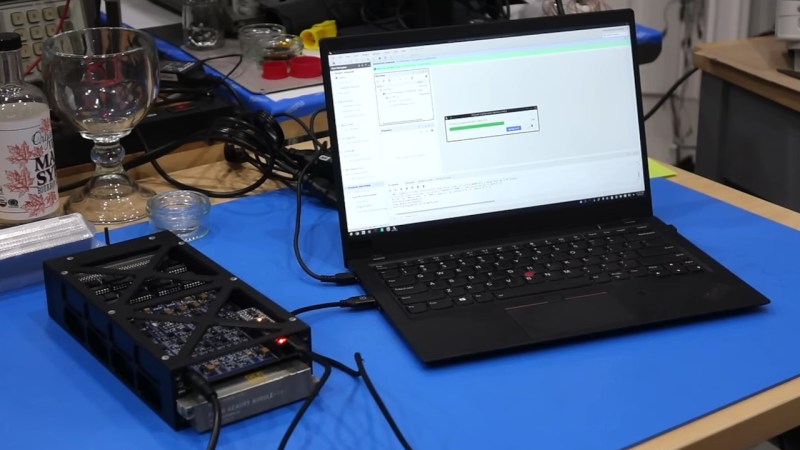One of our favorite retro hardware enthusiasts, [CuriousMarc], is back with the outstanding tale of preserving Apollo Program software, and building a core rope reader from scratch to do it. We’ve talked about [Marc]’s previous efforts to get real Apollo hardware working again, and one of the by-products of this effort was recovering the contents of the read-only core rope memory modules that were part of that hardware.
The time finally came to hand the now-working Apollo guidance computer back to its owner, which left the team without any hardware to read core rope modules. But the archive of software from the program was still incomplete, and there were more modules to try to recover. So, the wizardly [Mike Stewart] just decided to roll up his sleeves and build his own reader. Which didn’t actually work as expected the first time.
And this leads us into one of [Marc]’s elevator music explainers, where he gives a beautiful rundown on how core rope works. And if you are thinking of core memory based on ferrite cores, get ready for a brain stretch, as core rope is quite a bit different, and is even more complicated to read. Which brings us to the bug in [Mike]’s reader, which is actually a bug in the block II design of the core rope modules.
Reading a byte off the module requires setting multiple inhibit wires to select an individual core. An innovation in block II allowed those inhibit wires to run at half current, but it turns out that didn’t actually work as intended, and partially selected multiple cores on the other half of the module. And [Mike] forget to re-implement that bug — the reader needs to literally be bug-for-bug compatible. A quick recompile of the FPGA code makes everything work again. And the conservation effort can continue. Stay tuned for more in the Apollo story!















I’m speechless. Kudos to them!
My favorite line “Which didn’t actually work as expected the first time”. Story of my project life. But that’s where most of my DIY learning comes from (as well as from Hackaday articles and projects and then internet surfing down the techno rabbit hole)
These guys are the Pros from Dover.
45+ years of hackery and I have the skills of a caveman compared to these folks.
Don’t worry, you’re not alone. By comparison, most of us are wannabe hackers here. You’re at least mature enough to admit that, that’s not to be taken for granted. And by realizing your weakness(es), you’re able to improve, also. 👍
100%. Can’t learn anything when you already know everything, or at least you think you do.
I can CuriousMarc is a legend about this type of projects.
I just (re) read Sunburst and Luminary: An Apollo Memoir by Don Eyles recently, an excellent companion to this article about the software that went onto these ropes. Highly recommended.